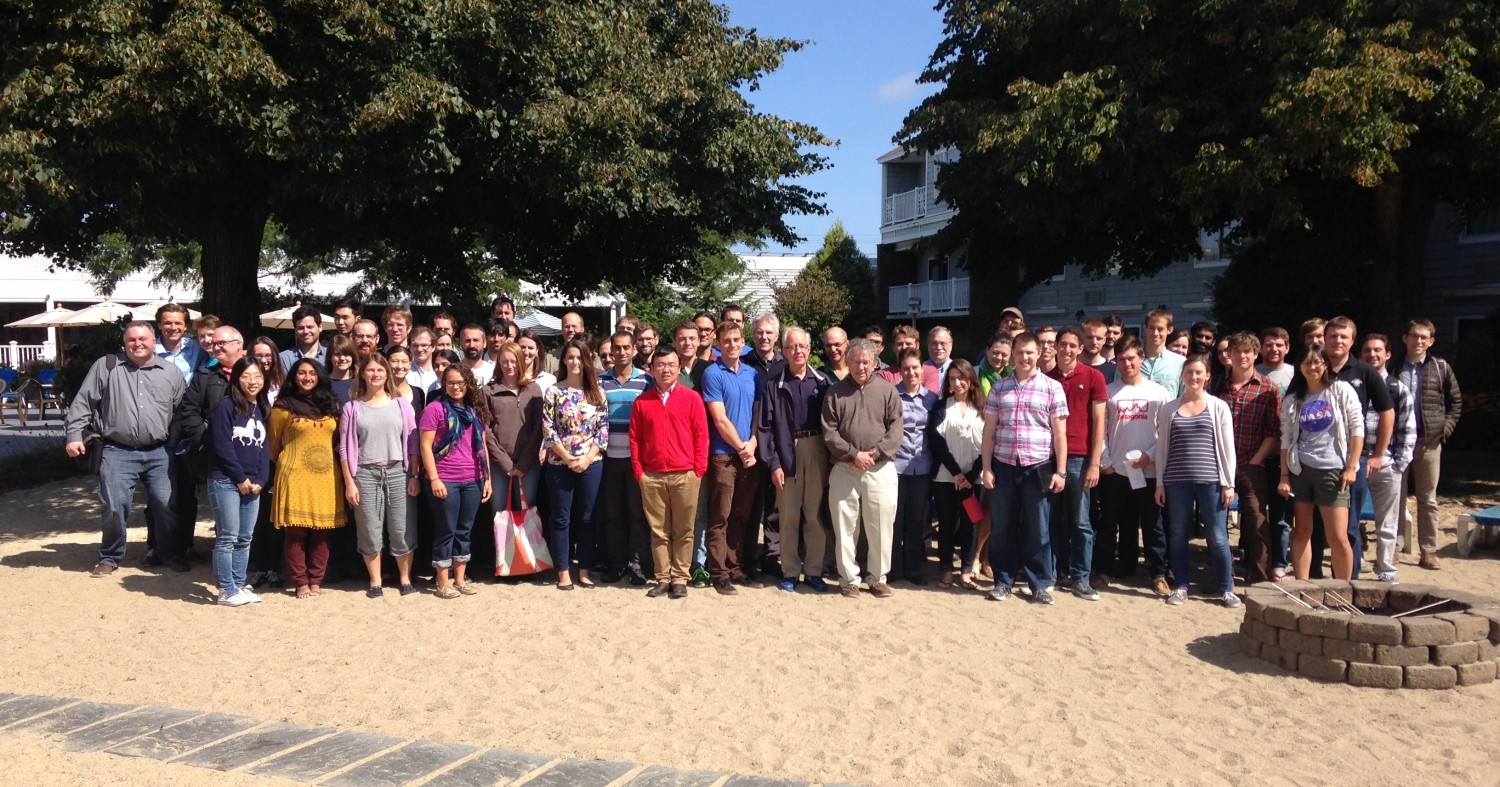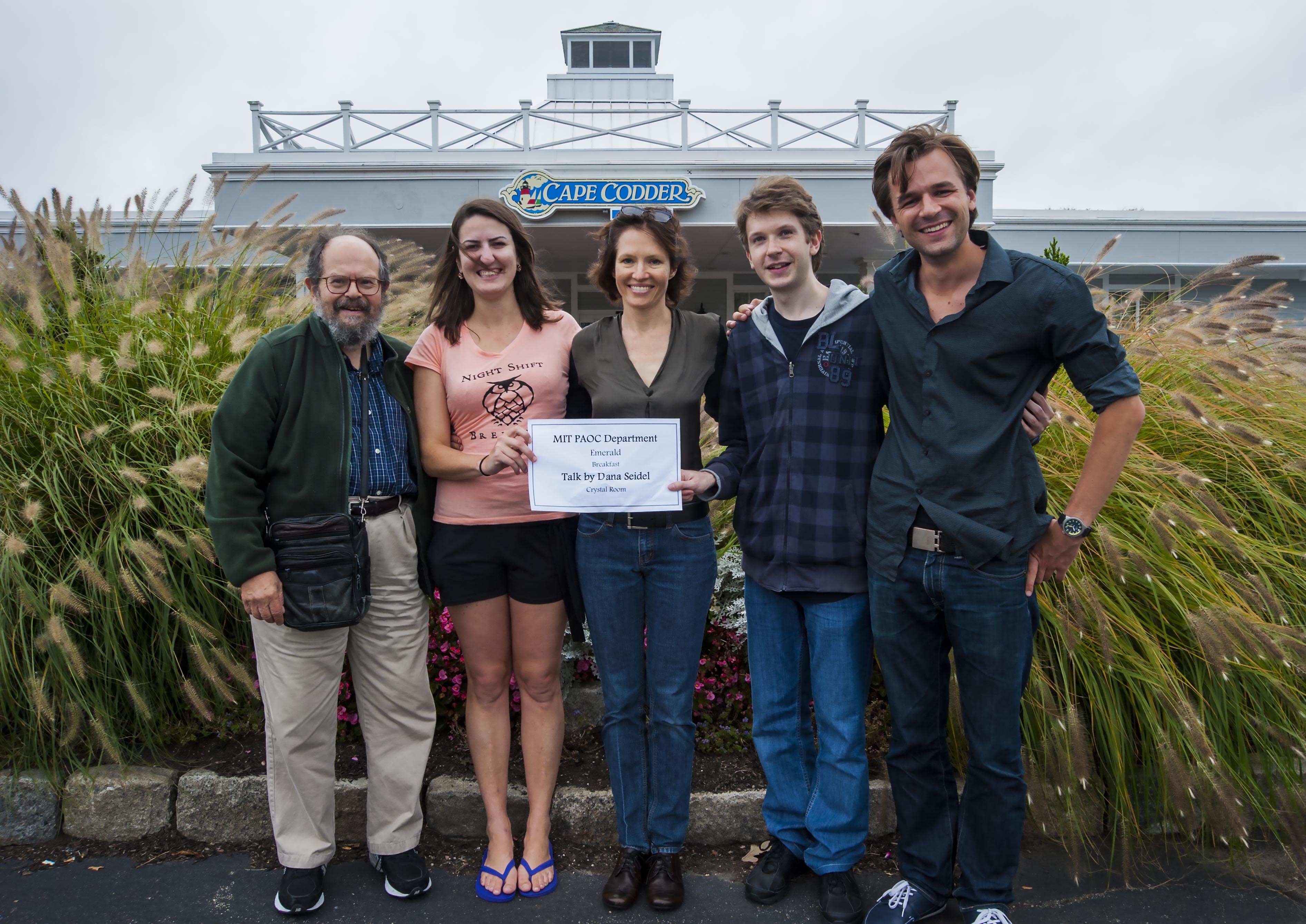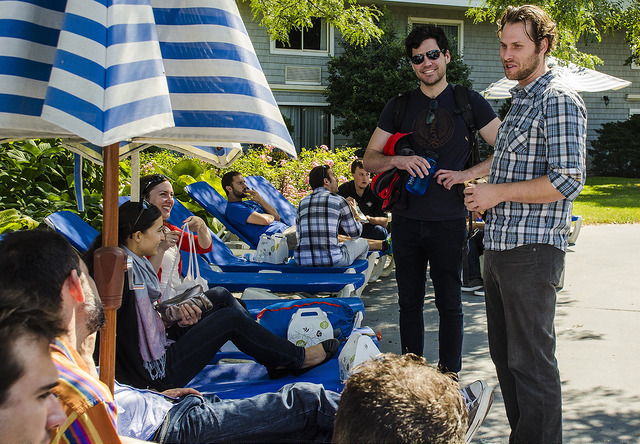PAOC Spotlights
The 2014 PAOC Retreat: Cape Codder Resort, Cape Cod
The faculty, graduate students, post-docs and staff of MIT’s Program in Atmospheres, Oceans, and Climate (PAOC) begin each year with a retreat supported by the Houghton Fund. The 2014 PAOC Retreat took place at the Cape Codder Resort over the weekend of September 19th-21st.

The endless food and drink, fascinating talks, stellar variety show, a tour around a local brewery and chances to befriend new colleagues were the highlights of this year's retreat. Hours were spent in the the heated outdoor pool, hot tub, wave pool, and for those ocean-seekers, the nearby Kalmus Beach, where hundreds of recently abandoned horse-shoe crab shells made for interesting walks in the sand. At night, everyone gathered outside to roast marsh mellows around a fire pit, and several faculty members brought their children outside to join.
One of the retreat's featured speakers, Robert Hart, Associate Professor of Synoptic Meteorology at Florida State University, gave a talk on his work on predicting the risks of tropical storms and hurricanes. Using historical surface observations, Hart has done a modern analysis of the devasting 1893 hurricane in New York City to understand the storms highly unusual path. Instead of losing longitude as it moved north of the Carolinas, it continued due north to New York City. Hart's reanalysis shows that '83 began to pivot around a second cyclone following close behind, keeping '83 close to shore instead of spinning out to sea.
Hart's main point was that these kinds of unusual cyclonic interactions can make hurricane prediction extremely difficult. When he ran a weather prediction model using the initial conditions of the '83 hurricane, the model showed a dramatic spread of potential storm tracks. He emphasized that, even with today's forecasting tools, without accurate data about the initial structure of a cyclone's size, expanse, wind gusts, and location of any interaction, then a forecast will carry an usual amount of uncertainty about potentially dangerous coastal surges.
 Hart also unveiled a unique project called the Meteorology and Atmospheric Science Academic Family Tree, a way to trace the intellectual heritage of scientists in the field. His group at FSU mined libraries, news and journal articles, obituaries, various historical archives, and solicited information from current colleagues to create a database of who advised whose PhD work going back all the way to foundational figures such as Johannes Peter Muller (1822) and Hermann Ludwig Ferdinand von Helmholtz (1842).
Hart also unveiled a unique project called the Meteorology and Atmospheric Science Academic Family Tree, a way to trace the intellectual heritage of scientists in the field. His group at FSU mined libraries, news and journal articles, obituaries, various historical archives, and solicited information from current colleagues to create a database of who advised whose PhD work going back all the way to foundational figures such as Johannes Peter Muller (1822) and Hermann Ludwig Ferdinand von Helmholtz (1842).
A screening of Antarctica: Beyond the Ice, a feature-length film produced by The Rutgers Center For Digital Filmmaking, dazzled us with an inside view of a scientist's life as part of the NSF ’s Long-Term Ecological Research Project at Palmer Station in the West Antarctic Peninsula. Our favorite parts included the beautiful footage of glacier ice and penguin populations, the way the film shows how the scientists on the cruise are really just normal people, and the clear explanation about the link between the small scale biology of the ocean and the larger climate system. The film's director Dena Seidel was there to talk about her work in science documentary filmmaking. She spoke about the importance of creating deep trust between filmmakers and scientists, the tricks to dramatizing the sometimes tedious nature of science, and the fact that a good science documentary must contain a “dramatic question that takes the audience on a journey.”
 EAPS Professor Paul O'Gorman gave a theory-based talk about some of the most puzzling physical attributes of the oceans, atmosphere, and climate, pointing out that there are several things the field doesn't understand about how the upward and downward motion of the atmosphere, or how the motions will change in different climates and seasons as the globe warms.
EAPS Professor Paul O'Gorman gave a theory-based talk about some of the most puzzling physical attributes of the oceans, atmosphere, and climate, pointing out that there are several things the field doesn't understand about how the upward and downward motion of the atmosphere, or how the motions will change in different climates and seasons as the globe warms.
The variety show featured a wide range of PAOC talent, including but not limited to, a violin duet by Daniel Rothenberg and Dan Amrhein, improvisational jazz trumpet by Sarvesh Garimella, a 20-person Scottish country dance choreographed by post doctoral researcher David Talmy, and a kazoo rendition of the Star Wars theme song by the third-year graduate students.
Thank you to graduate students Cristina Schultz and Gualtiero Spiro Jaeger for organizing the 2014 PAOC retreat!
***
Original story by Genevieve Wanucha. See more 2015 photos here and from previous retreats on our PAOC and EAPS Flickr pages.
